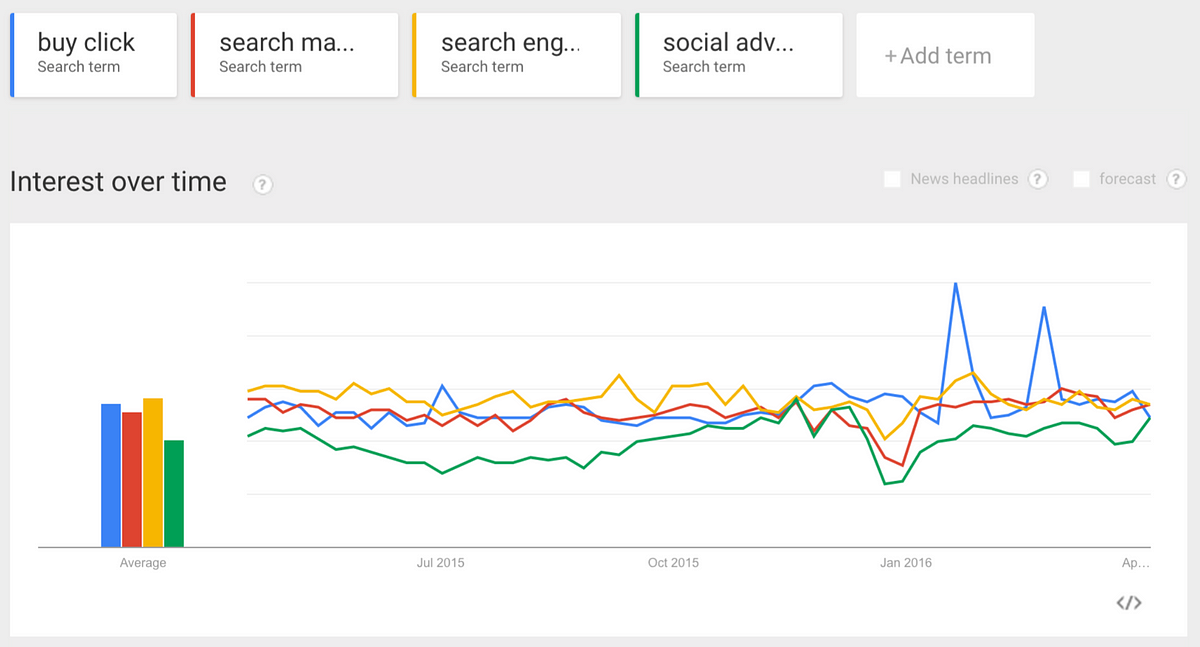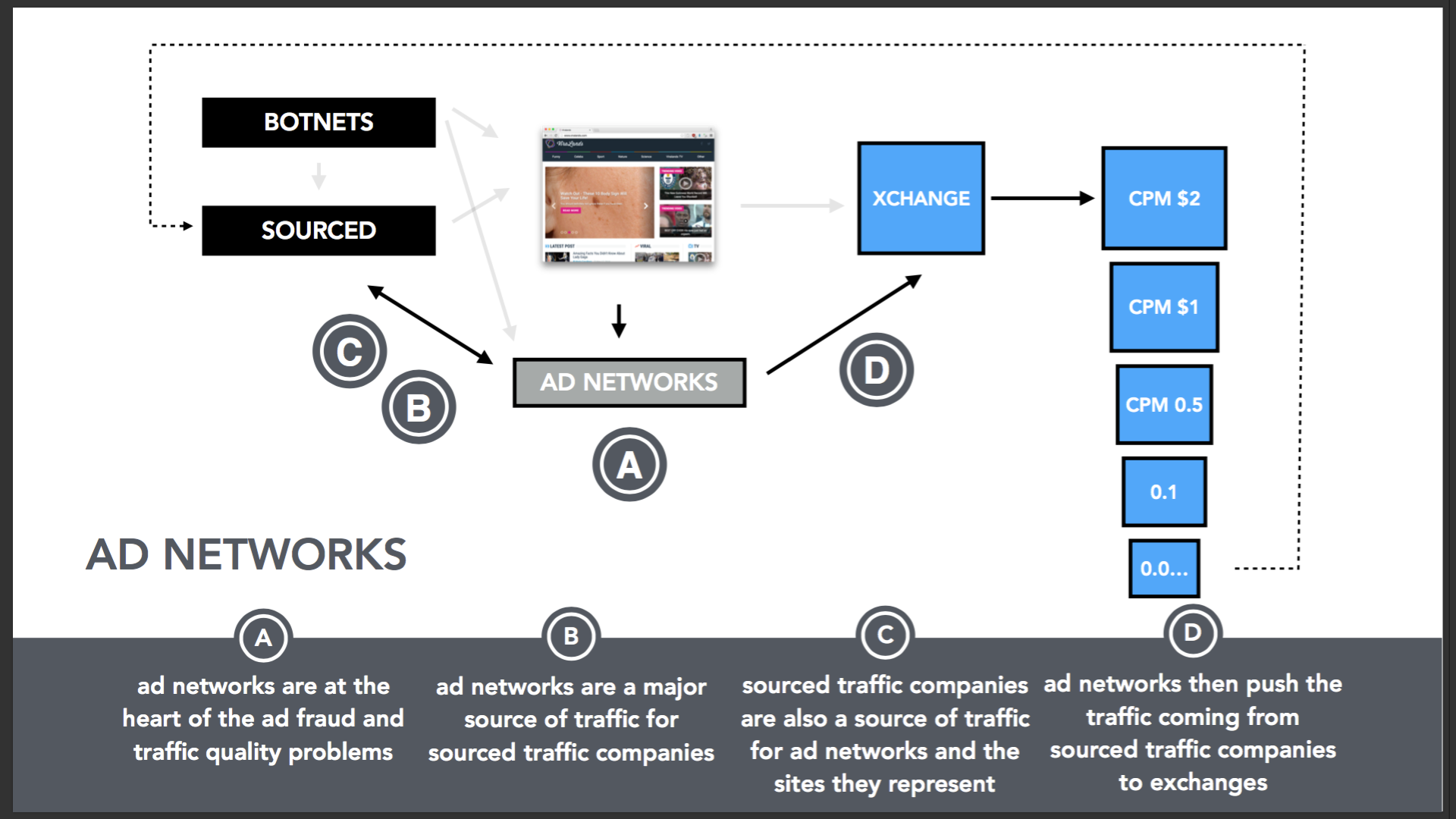TL;DR
We conducted a scan of 50,000 websites, where we picked the sites based on how much ad inventory the site is making available in ad exchanges. I feel confident to conclude that both the quality of ad inventory, and the sites that make the inventory available are far greater problems than the ad industry, law makers or the public understand.
Money for nothing, and chicks for free a.k.a way too much ad money
By June 2015, the traffic buying problem had gotten out of hand to the extent where out of the TOP50 global websites by volume of inventory, most were what we call “spamsites”.

According to Google Trends, at that time buying clicks had become as popular of a search term as “search marketing” or “search engine optimization”. In case you are wondering, buying traffic in adtech is like buying CDOs in finance before 2008. Or like taking EPO on Tour de France. In all of these examples, at some point the situation had become so bad that “doing it” was perceived as something you had to do in order to get to your goals. I have later learn that by then, there must have been dozens if not +100 companies just in US alone that were “arbitraging” as the core for their business model.
I watched closely how one company started by people I know had an amazing innovative idea (and that’s pretty hard with online ads), and after some struggle, realised the best way to make money in adtech is to become an ad network. It grew close to 2000% last year and raised a crazy amount of money.

With the CPM “waterfall” in place, what have been going on for years is that some companies go to the bottom of the waterfall, they are called “bottom-feeders”, but what they do is push that inventory right back at the top. Now increasingly including some trick to evade verification such as IAS, WhiteOps, DV or Moat for example. It’s easier to buy traffic that pass the filters of common vendors, than it is to buy traffic that pass the filters of uncommon ones. Traffic market and vendor performance in detecting ad fraud has been covered in Mystery Shopping Inside the Ad-Verification Bubble[1].
What did we find out?
It is clear that things have changed substantially in 16 months that we’ve spent observing the market-place using data from the same source. Have they changed to better, where we have less criminal earnings from ad fraud and less very poor quality sites? In short summary, I believe that earnings are up and various stakeholders make far more money from ad fraud than they made 16 months ago. Site quality on other hand has gone significantly up in the TOP100 sites,
In other words, there is definitely an effort in the part of the industry to make things better, which is showing a response from the opponents to make their appearance better. Let’s be very clear, this does not suggest that ad fraud is now a smaller problem, it could simply just say that now the industry is not a total fool anymore (as it was based on evidence just 16 months ago). The situation roughly 15 months ago can be witnessed with Botlab’s Project Arbitrage[2], a data visualization project highlighting the intersection of very large scale botnet and some of the highest traffic sites of the time.
A more detailed findings report covering 2015-2017 will be made available through a series of post. I’m confident that nobody in the world saw the start of the golden era in ad fraud as closely as we did…and that story will not go untold.
REFERENCES:
[1] Mystery Shopping Inside the Ad-Verification Bubble
http://www.slideshare.net/ShailinDhar/mystery-shopping-inside-the-adverification-bubble
[2] Botlab’s Project Arbitrage (data visualization) https://github.com/botlabio/project-arbitrage

